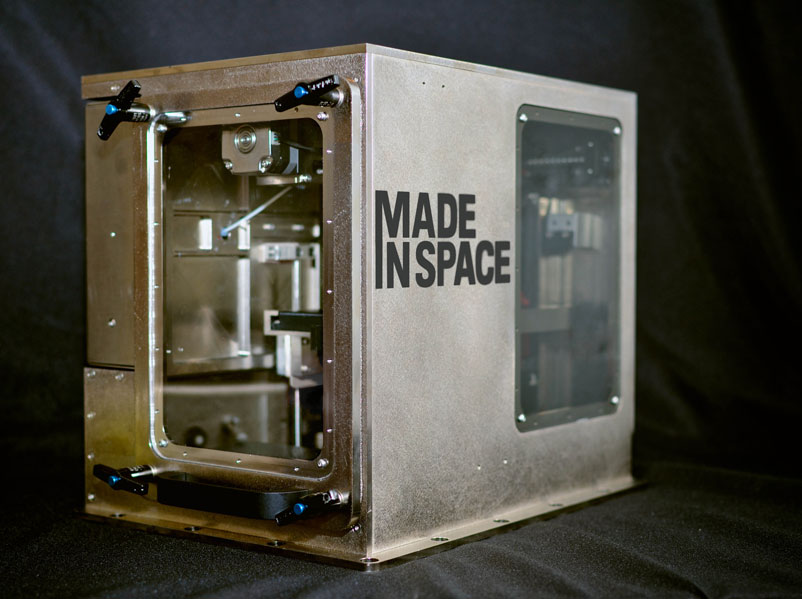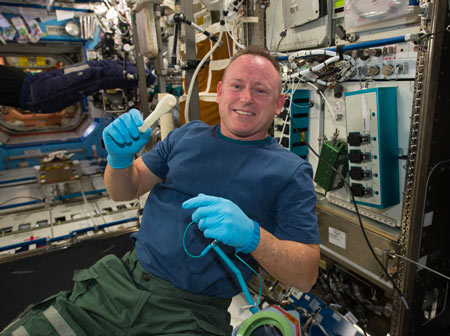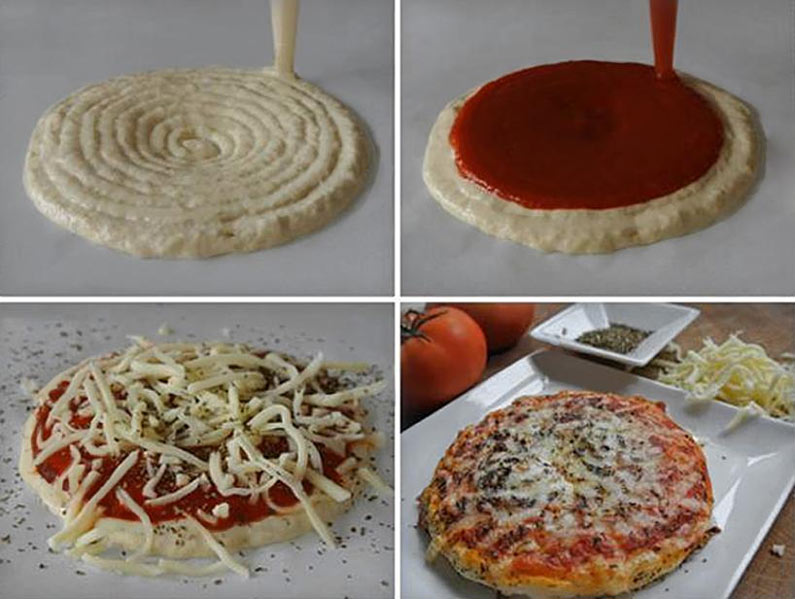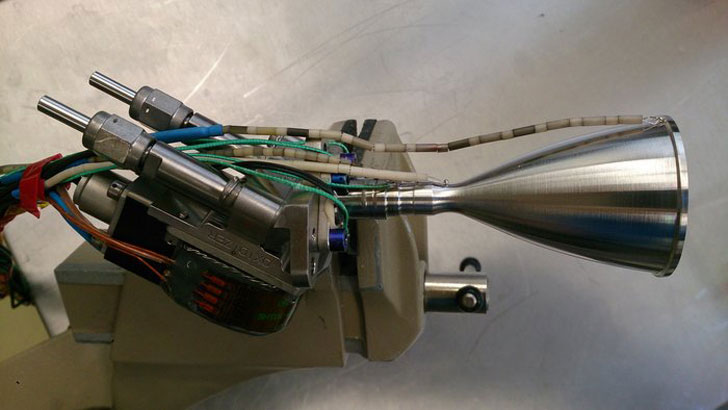3D printing for space
Why is 3D printing important for the space industry?
3D printing could revolutionize space exploration by helping astronauts create objects in space and on-demand: replacement parts for repairs, custom equipment for scientific experiments, and even things like food or buildings!
Indeed, while space is an extreme environment with very few exploitable raw materials, there is plenty of dust floating around. 3D printing technology can allow you to build solid structures from aggregated dust and microscopic particles. The European Space Agency (ESA) is considering 3D printing their base on the moon.
As for 3D printed meals for astronauts in space, NASA is funding a Systems and Materials Research Corporation project to develop a 3D food printer that can be used in a zero-gravity environment.
3D printing replacement parts in space
One of the main challenges that astronauts face is the lack of specific replacement parts on-board the space station.
A zero-gravity 3D printer
Thanks to 3D printing technology, it is now possible to manufacture spare parts in space. NASA and Made in Space are collaborating to solve that problem. The result of their experiments is the zero-G 3D printer, a 3D printer that can operate in zero-gravity environments.

They managed to produce a ratchet wrench from a 3D file that was emailed from Earth to the space station. This 3D printer uses the Fused Filament Fabrication technology (filament extrusion) and can print objects in plastic.

“Right now if something breaks, we’re completely dependent on launching a replacement from the ground. Imagine launching everything you might ever need for a mission to Mars or an asteroid, it would be challenging or impossible.”
Niki Werkheiser, Nasa project Manager
Future evolutions
In less than a week, the 3D file of the custom ratchet was designed, sent in space, and then manufactured by the 3D printer.
The next goal is to have a database of 3D files (STL files) of all the parts needed in the space station, in order to save time in case one of them breaks.
Being able to recycle 3D printed objects that are no longer needed and then reuse the material is also a big focus.
Solving the food problem with 3D printing
3D printing food in space
3D printers have the capacity to create a variety of products with a small amount of raw materials.
Thus, engineers found here the perfect technology for feeding astronauts on long-term space missions. NASA has invested $125,000 in SMRC, an ambitious project led by Anjan Contractor.
He succeeded in creating a food 3D printer able to 3D print pizza in space.

Pizzas are ideal for 3D printer because they’re made of different layers on top of each other (great for additive technology process like 3D printing):
- A layer of dough is first deposited on the 3D printer’s heating bed to be directly cooked
- Second, a layer of water, oil, and tomato powder is applied (tomato sauce)
- Then, a layer of cheese is deposited
- Finally, animal and vegetal proteins are added to provide essential nutrients
This process allows to cook a pizza in a few minutes and, according to Anjan Contractor, to print carbs, proteins, macronutrients, and micronutrients that are stored in powder form within a special cartridge. These powders remain edible for around 30 years, long enough for a mission to Mars.
3D printing a lunar base
Building a lunar habitation to ease exploration and research
Thanks to the 3D printing technology, the European Space Agency hopes it will be one day able to 3D print a base on the moon. International architecture studio Foster + Partner designed such a structure in partnership with Monolite UK, which provides the 3D printer.
According to Foster + Partner, the base must be assembled around a dome built on Earth. This dome will filter gamma rays, solar radiation and meteorites impacts. On the moon, two 3D printers would finish the build and strengthen the structure by using raw materials found on the spot.
Monolite UK says that their construction 3D printer is able to achieve a complete base in less than two weeks. The next generation is claimed to be twice as fast as this one.
Case studies: 3D technology for spacecraft
The 3D printed thruster chamber from the European Space Agency
In June 2015, the ESA unveiled the world’s first 3D printed spacecraft thruster, including a platinum combustion chamber. The use of 3D printing offered several advantages:
- Similar performances to a traditional thruster
- Possibility to use new build materials
- Lower production cost and turnover

The 3D printed oxidizer valve from the Falcon 9 rocket by SpaceX
SpaceX announced in July 2014 that they had successfully 3D printed an oxidizer valve for the 1D engine used in the Falcon 9 rocket. The oxidizer valve is a crucial part of a rocket engine– it controls the flow of liquid oxygen as it enters the engine’s combustion chamber. It took only two days to 3D print this valve, while traditional manufacturing processes take up to months to build such parts.

In addition, the 3D printed valve offers some key advantages, which have led SpaceX to decide to 3D print all of their oxidizer valves:
- Higher overall performances versus traditional manufacturing processes
- Higher resistance to fracture
- Superior ductility
The SuperDraco engine by SpaceX
SpaceX announced in May 2014 that their new rocket engine, the SuperDraco, had passed all the qualification tests (certifying metal 3D printed parts is a challenge).

The SuperDraco boasts 3D printed combustion chamber, which was 3D printed using the Direct Metal Laser Sintering process (DMLS). Elon Musk is enthusiastic about the future of additive manufacturing for the space industry:
“Through 3D printing, robust and high-performing engine parts can be created at a fraction of the cost and time of traditional manufacturing methods. SpaceX is pushing the boundaries of what additive manufacturing can do in the 21st century, ultimately making our vehicles more efficient, reliable, and robust than ever before.”
Elon Musk


